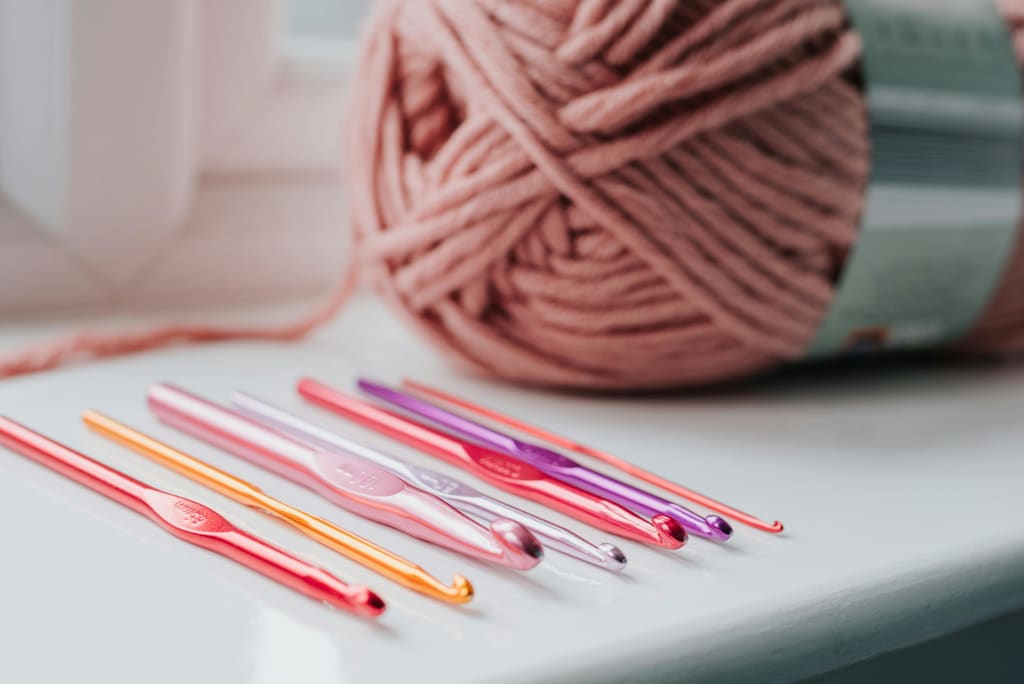Hooked on History:
Exploring Crochet in America

Crochet comes from the French word “croche” which means hook. No one knows the exact origin of crochet. There are some theories. One theory is that it came from needlework from the Chinese that had spread to North Africa, India, Persia, and Turkey. Others believe it came from the tribes in South America.
There is evidence that women have shared crochet patterns but the first documented crochet pattern was in 1824 and was for expensive purses in gold and silver silk thread.
In the beginning, crochet was invented as a cheap substitute for traditional lace so it had a hard time overcoming its reputation as an inferior craft.
There was a woman in England who is known as the Mother of Modern Crochet, she was 59 years old when she died on the day after Christmas.
Crochet became popular in the United States in the late 1940s due to the renewed interest in home decor during the post-war period. The granny square took off in the 1970s. During this time, the demand for thicker threads and yarn in colorful patterns was high
Crochet patterns became more simpler after World War I and there were fewer patterns due to the Great Depression.
Crochet patterns increased after World War II due to homemakers’ interest in DIY projects and home crafts in post-war prosperity. The bright colors of the granny square became popular in the 1970s generation.
Women would crochet the soldiers of World War II hats, scarves, and sweaters. And then would crochet household needs to save money. Crochet became a means of leisure and luxury clothing during the post-World War I and II. Crochet clothing became more popular globally and across modern fashion houses and runways.

According to Wikipedia "A crochet hook (or crochet needle) is an implement used to make loops in thread or yarn and to interlock them into crochet stitches. It is a round shaft pointed on one end, with a lateral groove behind it. The point eases the insertion of the hook through the material being crocheted and the groove makes it possible to pull a loop back through the material. The shaft is then divided into a working area that determines the hook's nominal diameter and ensures the uniform sizing of the loops formed on it, and a handle" (https://en.wikipedia.org/wiki/Crochet_hook).
"The earliest crochet hooks had removable needles. Crochet needles were made in Redditch, England, using the same techniques that were used to make sewing needles and fishing hooks. The needles were handmade of wrought iron and then the iron was converted to steel. Only a final polishing of the very hard steel was required" (https://librarycompany.lcpimages.org/HookBook).
Even today granny squares are still popular. There are many books on how to crochet and patterns. Crochet is still popular today.
If anyone wants to learn how to crochet all they have to do is buy a book of patterns or they can go on YouTube and watch a tutorial on how to crochet. It is always good to see kids (girls and boys) learning how to crochet and putting them on TikTok. In the past, crochet and knitting have been known as old-time hobbies at this age, younger people are showing interest.
There are benefits to crocheting combating insomnia, helping cope with grief, and depression, better hand-eye coordination, helps develops fine motor skills, use as a color and tactile therapy, and reducing high blood pressure. These are just a few benefits of crocheting.
About the Creator
Lisa Briskey
I love to write, crochet, and sew. I am a grandmother of a two-year-old granddaughter.
Follow me on Medium: https://medium.com/@lisabriskey5
And support me on my Ko-fi: https://ko-fi.com/lisaj or https://ko-fi.com/lisabriskey






Comments
There are no comments for this story
Be the first to respond and start the conversation.